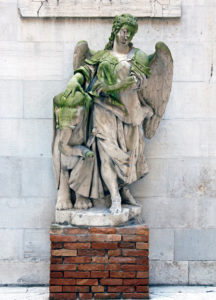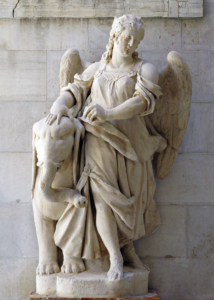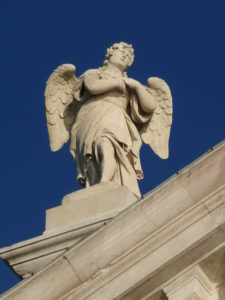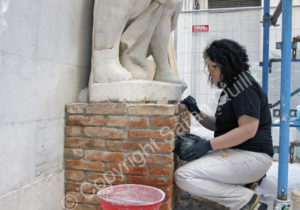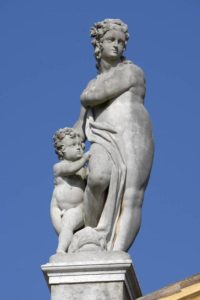Winged Figure with Elephant - a 17th century sculpture in a courtyard off Piazza San Marco
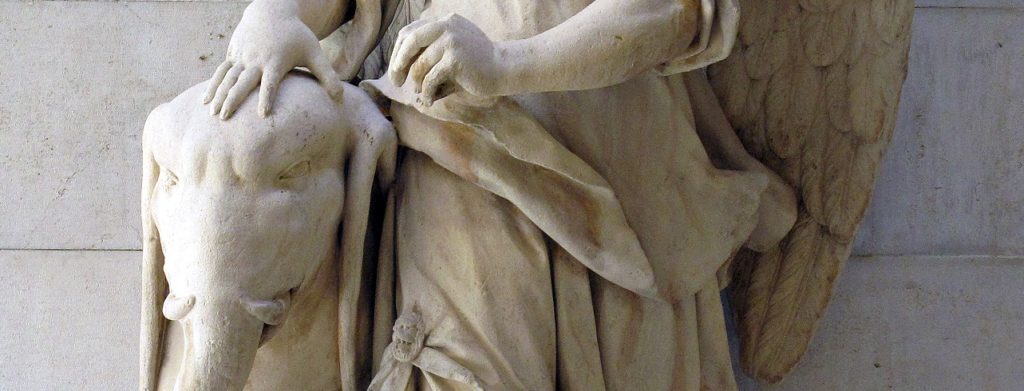
About the project
There are no records to explain how this unusual sculpture came to be in one of the courtyards of the Procuratie Nuove, opposite the stairs up the State Apartments of the Palazzo Reale.
Monica Vincenti who undertook the historical research that formed part of the conservation project, has concluded that on stylistic grounds the Winged Figure and Elephant are probably by Giambattista Albanese (1573-1630) a sculptor from Vicenza. The combination of winged female figure and elephant may be a new iconographic invention created for the garden of a literary patron.
Giambattista and his brother belonged to the entourage of the noble Gualdo family and worked with Vincenzo Scamozzi sculpting garden statuary for the Veneto villas including the Villa Rotonda. The learning and literary interests of their patrons appears to have extended the repertoire of figures chosen to ornament their gardens. Giambattista was responsible for the six mythological deities now in the garden of the Villa Fietta at Altivole, although their original provenance is unknown.
Among his Venetian commissions are the four warrior saints on the facade of the basilica of San Marco and the five statues crowning the facade of San Giorgio Maggiore.
The Winged Figure would appear to date from about 1610-1620, on the basis of its affinities with the San Marco figures.
The San Giorgio angels, one of which is illustrated here, are even closer, sharing the same vigorous movement, the contrapposto of legs and arms, facial details, drapery, volume and the detailing of the wings and sleeve revers. Finally, De Vincenti suggests that the face of the Venus with Cupid at Villa Fietta, Altivole, is almost identical to that of the Winged Figure.
Project location
In brief
-
This sculptural group can be found in the third courtyard of the Procuratie Nuove, which is just off Piazza San Marco, behind Caffé Florian.
- There is public access to the courtyard.
-
Its provenance and iconography were a mystery when conservation was proposed in 2013 to treat the extensive cracking and remove mossy green algae that covered it.
-
Historical research has concluded that, on stylistic grounds, it is probably by Giambattista Albanese (1573-1630).
-
Conservation carried out in situ by Ducale Restauro, under the direction of the Venice Soprintendenza with testing by Laboratorio Analisi di Materiali Antichi (Venice University IUAV) to establish previous treatments and inform the course of the project.
- The project was completed in 2014.

